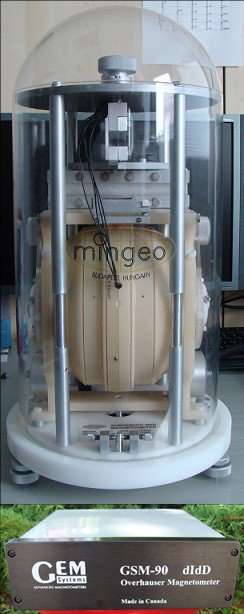Instruments & models
Magnetometers
| PI | Georgios Balasis |
| Operator: | Georgios Balasis |
| Participant | National Observatory of Athens |

HellENIc GeoMagnetic Array (ENIGMA)
National Observatory of Athens currently operates ENIGMA, the HellENIc GeoMagnetic Array [http://enigma.space.noa.gr/], an array of 3 ground-based magnetometer stations in the areas of Trikala (Klokotos), Attiki (Dionysos) and Lakonia (Velies) that provides measurements for the study of geomagnetic pulsations, resulting from the solar wind - magnetosphere coupling.
ENIGMA is the first magnetometer station array to operate in Greece, and within a few years of operation has achieved the status of a SuperMAG contributor [http://supermag.jhuapl.edu/]. SuperMAG is a worldwide collaboration of organizations and national agencies, that currently operate more than 300 ground-based magnetometers. SuperMAG provides easy access to validated ground magnetic field perturbations in the same coordinate system, identical time resolution, and with a common baseline removal approach. The purpose of SuperMAG is to help scientists, teachers, students, and the public obtain easy access to measurements of the Earth's magnetic field.
The Earth's magnetic field is produced, to a large extent, by a self-sustaining dynamo operating in the fluid outer-core. It is also contributed to by magnetised rocks in the Earth's crust, electric currents flowing in the ionosphere, magnetosphere, and oceans, and by currents induced in the Earth mantle by time-varying external fields.
ENIGMA monitors the variations of the geomagnetic field associated with the occurrence of geospace magnetic storms and magnetospheric ultra low frequency (ULF) electromagnetic waves. One of the ENIGMA main research objectives is the study of space weather effects on the ground, i.e., Geomagnetically Induced Currents (GIC).
Ground-based magnetometers have proven to be the workhorse of magnetosphere-ionosphere coupling physics. Ground magnetometers enable effective remote sensing of geospace dynamics and therefore their importance in space weather monitoring and research is indisputable. At Finokalia site we operate a state-of-the-art ground-based magnetometry system.
Suspended Overhauser Delta Inclination / Delta Declination (dIdD) Observatory System
In the past, magnetic observatories relied on a combination of Overhauser, fluxgate and theodolite instruments for obtaining total field and variability measurements. GEM then introduced the dIdD (delta Inclination / delta Declination) vector system for high precision results. Now, the dIdD has been enhanced significantly with the development of the Suspended dIdD system. The Suspended dIdD comprises a revolutionary small diameter (250 mm), spherical Overhauser sensor with a bidirectional set of bias coils. Data is acquired directly to a GEM Overhauser magnetometer or direct to a computer.
The Suspended dIdD simplifies the setup of magnetic observatory installations by eliminating the need for fluxgate magnetometers and thermally insulating structures. In addition, the new system eliminates any kind of calibrations, which in turn frees personnel to concentrate on more essential tasks (interpreting and understanding data).
These important new benefits are achieved through system design:
- Temperature coefficients that reduce drift to less than 0.1 nT / °C (compared with 0.5 nT / °C for high-end fluxgate magnetometers);
- Physical suspension of the Overhauser sensor (shown experimentally to contribute to reduced drift);
- Long term drifts that are less than 2 nT / year - matching or exceeding the best component measurement at any observatory;
Instrument activity
Recent measurements
No measurements found.